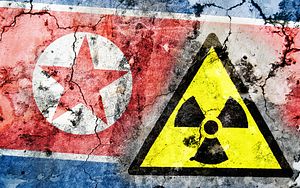As North Korea’s nuclear weapons program has steadily advanced, its leadership has sought to lay out a coherent nuclear strategy. Most critically, Pyongyang has sought to outline the conditions under which it would have no choice but to use its nuclear weapons against its enemies. During the 7th Congress of the Workers’ Party of Korea, Kim Jong-un, North Korea’s supreme leader, outlined the latest iteration of the country’s nuclear use conditions.
According to a state media report on Kim’s report on the Party’s work and activity, “as a responsible nuclear weapons state,” North Korea “will not use a nuclear weapon unless its sovereignty is encroached upon by any aggressive hostile forces with nukes, as it had already declared, and it will faithfully fulfill its obligation for non-proliferation and strive for the global denuclearization.”
The language here is far from unambiguous and clear,but it helps shed some light that may inform ongoing debates about the sort of nuclear posture that North Korea is looking to adopt in reality. While some readings of this statement in international coverage have suggested that Pyongyang has ruled out first use, this is not clear either. For instance, Pyongyang’s interpretation of what activities violate its “sovereignty” are open to interpretation. (It might, for example, argue that annual joint exercise between the United States and South Korea, or South Korean use of propaganda speakers violates its sovereignty.)
Moreover, it’s unclear if “aggressive hostile forces with nukes” implies that the aggressor would have to be a nuclear weapons state (i.e., the United States or China). This description would exclude South Korea, which does not have its own nuclear weapons, but benefits from U.S. extended deterrence, which includes Washington’s nuclear umbrella.
The rest of the statement can mostly be seen as hollow window dressing. Nothing about North Korea’s ongoing nuclear energy and weapons development suggests an interest in complying with global norms on non-proliferation and denuclearization. In 2003, North Korea famously became the first party to the Nonproliferation Treaty (NPT) to voluntary withdraw. Since then, North Korea has conduct four nuclear tests, most recently in January, and shows no intention of backing down.
It would seem that a reasonable interpretation of what North Korea means with this latest declaration about its nuclear weapons strategy is that it will not look to use nuclear weapons first in peacetime, pursuing a second-strike capability instead. However, should a conventional war break out on the Korean peninsula, Pyongyang may look to strike first. Given the North Korean regime’s interest in ensuring survival, this stance makes sense. (For example, a first-use doctrine during peacetime might encourage the U.S. and South Korea to seriously consider so-called ‘decapitation’ attacks to paralyze the regime.)
Despite the announcement on its nuclear posture during the Workers’ Party Congress, Pyongyang’s nuclear weapons strategy remains ambiguous, which is likely by design. As it works toward demonstrating a credible nuclear weapons delivery capability (indeed, several advancements in North Korea’s fuel, propulsion, and warhead technology this year demonstrate steady progress), Pyongyang needs to keep the United States and South Korea guessing.
Once North Korea’s capability to credibly deliver a land- or submarine-launch, nuclear-tipped ballistic missile arrives, Pyongyang may outline its nuclear strategy in more explicit terms.

































